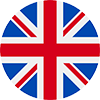Suppose your project is over and you are looking for a new one. One that will surpass the previous and make you feel in your element. It doesn’t take too long and the offer is on the table. How to succeed among other competitors? It starts with a high-quality resume, something you often can’t do without. A CV that is interesting and properly composed is not a relic, on the contrary, it is a sign of seniority and professionalism. Let’s take a look at how to draw up such a high quality CV, so that you can become the first candidate to be invited for an interview in your dream job.
A high quality template is half the job
Let’s start from scratch. In order to show yourself in the best possible light, find a suitable template for a structured CV, one that will be appealing. HR managers and employers are interested in whether you will fit into their existing team and the CV is your first chance to show what you are looking for and what you like. Thanks to your CV, they can quickly evaluate whether you are a suitable candidate, so better take good care of it. To make your work a bit easier, we've found several websites where you can download an editable template for free, and where AI will assist you with the entire creation of your resume according to your preferences.
On the Visual CV website, you can not only download a template but also create perfect text for your CV with the help of AI. Kick Resume will assist you with crafting a cover letter using AI or present your own career map. And Rezi will even help you prepare for an interview with its personalized questions using AI.
Write like wildfire, but make it reasonable
Before we go into the individual parts of an ideal CV in detail, let’s remind ourselves of the basic rule: No one has time for long stories today. The key is a structured CV. Still, be aware of excessive brevity and go into detail where appropriate. If you want to disclose where you worked before, what your job was and what technology you used, go ahead. But avoid long sentences, leave out the cranky, archaic words or phrases, they have no place here. Write briefly and comprehensibly, organize information in points or in short well-designed paragraphs (one paragraph should ideally consist of around 3-6 sentences or points). If some of the information in the text is important, you can write it in bold to highlight it. The total length of the CV should be up to 2 A4-size pages. Show that you can choose the essentials and always think about the well-arranged graphic design, so that the whole CV looks clear.
Header
Start very simply: with personal data. Name, city (ideally the one you actually live in, not where you grew up with your parents), phone (in the format with the international area code, i.e. +420 for the Czech Republic) and e-mail (but not the one you set up at the age of 13 with the name of your favourite comic book hero). Indicating the date of birth, exact address and marital status is entirely up to you, but be sure that this is the data employers should not be interested in when making decisions.
Introduce yourself
Just a few sentences that describe you. Don’t forget that you make your first impression with this short description in a few sentences. Try answering the following questions in your introduction:
- Who are you?
- What do you enjoy?
- What do you do?
- What are your goals?
- Is there a field or activity that attracts you and you’d like to learn?
Don’t forget to highlight your best quality or skill and describe it directly using an example. If you are a team player, explain where you used your team spirit the best when you worked in an international team. If, on the other hand, you prefer to work in a smaller team, don’t be afraid to say that you like a team where you know each other well and can rely on each other, such as in your last job.
Let your future colleagues get to know you better and reveal something from your personal life. Mention what you enjoy in your free time, what you do or whether you have any personal achievements with your hobbies. Marathon as well as stargazing count!
If you are a tester, you can write the introductory performance in this spirit: “I fulfil my dream and make a living as a manual tester. I have experience in the financial sector and I would like to support my knowledge with certifications. I have experience in planning testing, creating testing strategies and leading a smaller team of testers. My goal is to become a Test Leader. I enjoy squash and good coffee on my time off.”
As a developer, you can easily show which technologies you like the most, e.g.: “I am a positive-minded IT enthusiast, mainly into Java, but I am also interested in Python, AI and developing in React. I enjoy the full-stack developer journey. I would like to develop a meaningful product in a small team using real-time libraries or artificial intelligence. Outside of work, I like to climb rocks and organize scout camps for children.”
Smile, please!
Don’t forget to attach your photo to the header, the HR specialist will be happy to connect specific information with your face. When choosing a suitable photo, do not forget about the neutral background and make sure your face is clearly visible. Photos from parties or those with sunglasses at the pool or mountains are good for social media, not here.
Sell your work experience
Your work experience is the most important item in the entire CV, so make a real effort here with the list and description. Consider which jobs are worth pointing out and which will help you in getting a new one. For example, if you worked as a waiter during your studies or stood at the reception at the hotel, you can easily skip these jobs. Someone has a lot of experience and if they wrote it all down in their CV, it would take up several pages… but this is not your goal. If you have a lot of experience, focus on the essentials. The ones where you were proud of your work. The others should be mentioned in a nutshell, but do not leave them out. Do not be afraid to say that you finished some jobs in the trial period, you can discuss the details at the interview.
How to correctly fill in your work experience?
For each employer, indicate:
- Year and month when you started and finished
- The exact job title and a brief description of the position
- What were you responsible for?
- What did you do?
- What tools, programming languages, technologies did you use? (Remember to ALWAYS give the exact name of the technology and its level.)
- What have you learned?
- What was the result of your work?
Sort the work experience chronologically in a sequence, start with the latest one and put the oldest ones at the end. Positions should also be linked to each other. If the period between two positions is too long, prepare to be asked about this ‘gap’ at the interview. To avoid questioning why you were looking for a new project for such a long time, you can state ‘vacation, travel’ in your CV to mention the reason why there is a longer break between two projects. This will clarify everything from the start and no one will need to ask you questions. Also, avoid internal abbreviations, because not everyone can be familiar with them. And if the company is small, it is good to briefly mention what it does.
If you have worked as a tester, developer, analyst, or just want to be inspired what a job description can look like, your work experience can look like the following:
Test Analyst, Major Bank a.s. (1/2019 - present)
- Leading a team of 3, support and mentoring of testers
- Creating a test plan, reporting, designing a test strategy
- Creating test cases for other QA - test analysis and design
- Creation of test data, performing SIT & UAT, defect reporting
- Business and development support
- Technologies: Jira, Postman, HP QC, SQL, SOAP UI, Wireshark
IT Development Co.
Senior Java Developer
March 2021 - present (10 months), Brno
- Designing a completely new cloud infrastructure in AWS and Kubernetes
- Development of an internal test of the framework with a focus on cloud platforms
- Development of full stack back office applications and other support tools
- Technologies: Spring Boot, Spring Cloud, React, Kotlin
Life is IT Ltd.
Business analyst
April 2022 - present
Job description:
- Business analysis for the customer outgoing payment system (OPS)
- Validation of solutions with suppliers of individual systems for system integration (CZ, SK, UK)
- Revision of functional specification, WS mapping check (Postman, SoapUI)
- Technical and development documentation - Word, Excel, JIRA, Confluence
Senior Backend Engineer, Tech Lead @ IT Lovers
12/2016 - 06/2018, Praha
Development of backend systems for Mastercard solutions. Redesign of an old monolithic application and creation of a new modern microservices architecture based on Spring Boot and Spring Cloud (Eureka, Zuul, Hystrix, Ribbon, ...). My other responsibility in the project was to plan, manage releases, and optimize development workflows (PCI-DSS compatible solutions from GIT repositories) to achieve better efficiency and minimize human error. In-depth knowledge of Spring Framework, Java 8, Docker, GIT, Atlassian technologies (Bamboo, Jira, Bitbucket, Confluence), and AWS was required.
Education that has shaped you
Education really matters, so don’t forget it. Indicate always only the completed education or the one in progress. Begin with the highest level achieved and continue below. Skip elementary school, no worries about it. For school, state the year of commencement of study only after its completion, continue with the field, title, or name of your final thesis, which may be of interest to some HR managers. Believe that your future employer will be most interested in your experience, so do not be afraid to put the education at the very end in the structure of your CV.
Courses, certificates, hackathons, your own projects
Especially in IT professions, your participation in a hackathon will really stand out, and be sure that at the interview you will probably talk about it. Show what you do beyond the scope of your work. Indicate the institution which provided your supplementary education, year when you applied, length of the course and whether it was completed, for example, with a certificate (do not be afraid to include the courses completed without any exam, the point here is to show that you like to learn, not how many papers you have posted on the wall).
In the IT field, it is typical that many specialists have tried to work on their own project. And if it’s not ultra-secret and you like to brag about it, tell the world about it. Show what the project was dedicated to and what successes you have achieved with it. Proactivity beyond the regular work routine is often the most valuable asset. You can also include a link to your personal website, professional work, GIT, GITLab, GITHUb, or other links to present or show your codes.
Language here, language there
Don’t forget your language skills. Indicate the level you can actually communicate at, so that it is clear in advance whether you can work with colleagues from foreign countries. Choose one of the standardized levels: complete beginner (A1), beginner (A2), moderately advanced (B1), intermediate (B2), advanced (C1), expert (C2). It’s really worth not to lie here, believe us that languages are very easy to verify right at the interview using a simple sentence: “Can we switch to English?” And if you attend a language school, mention it. Each plus point counts.
Are you interested in the IT field and looking for job positions and opportunities in the IT industry? Whether you are a programmer, developer, tester, analyst, or software architect, contact us and we will find an IT project tailored to your needs from our IT job offers. Take a look at the current available job positions in the IT field. We will help you find new job challenges and opportunities. We look forward to collaborating with you!
Final tips and tricks and the most common mistakes to avoid
You already know how to write your resume so that you stand out among other candidates and do not miss your dream job. Let’s take a look together at the most common mistakes that HR professionals often encounter and you can avoid them now. Tips and tricks are based on the experience of our HR department.
Chronology
Keep in mind that everyone wants to see your previous work experience first, which should be sorted chronologically, from the newest to the oldest. Do not skip over and think about how your projects, trainings, and other experiences went in a nice way, so that the person does not have to search and put them one after another by date.
Appearance matters
We don’t like to admit it, but it does. What your CV looks like is important. The CV should appear clean so that one can be easily find what they’re looking for. Use basic, easy-to-read fonts such as Calibri or Arial and do not play the graphic designer unless you are one. The structure that you try to follow is crucial: the last jobs should appear first under your personal data, and only then the highest level of education achieved. All information has clearly defined places that help not only recruiters orient themselves. If you want to use graphic elements to make it special, go ahead, but again: be reasonable.
You can download our CV template HERE (for developers) and HERE (for testers and analysts).
Do not underestimate the format
Always send your CV in PDF. It appears the same on all computers and you do not run the risk of your work falling apart or being scattered just by being open in another program or operating system.
Structure too complex
Stick to simplicity. Sometimes, it happens that candidates list individual projects separately from work experience with the names of employers, and the recruiters then have to pair these themselves. Place projects and works in one section, where you can link them together.
Do not insert screenshots from applications
CV is not a picture book, avoid showcasing your work in the form of screenshots. You can upload these to Git, GITLab, GITHUb, or your own website, where you can present your work more easily.
Too much technology
We know that you want to show that you can do a lot and that you know plenty of programming languages, technologies and tools. But sometimes what you really know and what you excel at can get lost in such an extensive list. Include in your resume only what you really believe in. If you are a beginner at something, add a note about it. It is always better to communicate the level of knowledge at the beginning, so that you and your employer are not unpleasantly surprised afterwards. You can leave out things you may have encountered at school but have not used at work for years; focus on what you can use in your new job.
Don’t take the others’ credit
If you’re working together on something as a team, it’s clear that you’re proud of the results. However, do not take the credit of others. Write down what part of the team project you were in charge of and avoid the word ‘we’.
Correct CV template
When using a CV template, make sure it does not contain the former employer’s logo. If possible, delete it or find a new template. Trust us, it doesn’t look good.
Cooking or Photoshop classes?
Why not, you can show your future employer that you have other hobbies and interests than just work. It’s definitely desirable. But be careful where you put this information in the CV structure. They’re more suitable for the hobbies section. The Training and Certification section should contain only what is relevant for the position and important for the specific field.
More jobs at the same time?
If you work for several employers at the same time, with one project as a secondary employment or a part-time job, write it down. Show which project you are investing more time in and which one is only an occasional help.
Double-check everything
Grammatical mistakes are not tolerated in the CV, just like nowhere else. Go through the whole text several times and feel free to let others read what you’ve written, they may see what you do not see at the moment. Because it would be a shame if all your efforts failed on a misspelled word.
Are you a driver?
Information on how long you have had a driver’s license may be interesting, but probably for the IT profession perhaps not as much as the technologies you control. Therefore, if your job is not delivery of anything or anyone, you can leave this information out.
CV or LinkedIn
Instead of your CV, you can use a really well composed LinkedIn profile. If you refine it, you may start to receive job offers that will be targeted directly at you and your experience. Take the effort and fill out your LinkedIn profile. You will see that you will soon reap your harvest in the form of personalized offers.
Communication with HR
You may find this paragraph unnecessary, but believe us, it is not. If you are applying for a position you like and you are sending your CV to the HR staff, please, write a short paragraph in the email. Say hello, briefly introduce yourself, write why you react to the offer and what you like about it, and attach your CV. If you send only the Thumbs Up emoticon and CV in the attachment, you are slightly degrading yourself and may be spoiling the first impression you make on your future employer.
🟡 Are you looking for an interesting project? Check out how we do things here and see which colleagues we're currently looking for.
🟡 Do you have a colleague or friend who is looking for a new project? Join our Referral program and get a financial reward for your recommendation.
🟡 Would you like to start working in IT? Download our ebook START WORKING IN IT: From First Steps to Dream Job, in which we guide you step by step with information, courses, and practical experience that are so essential not only for those who want to switch fields, but also for those who want to advance their careers and further their education.
Or share this article, which may also be useful to your acquaintances.














